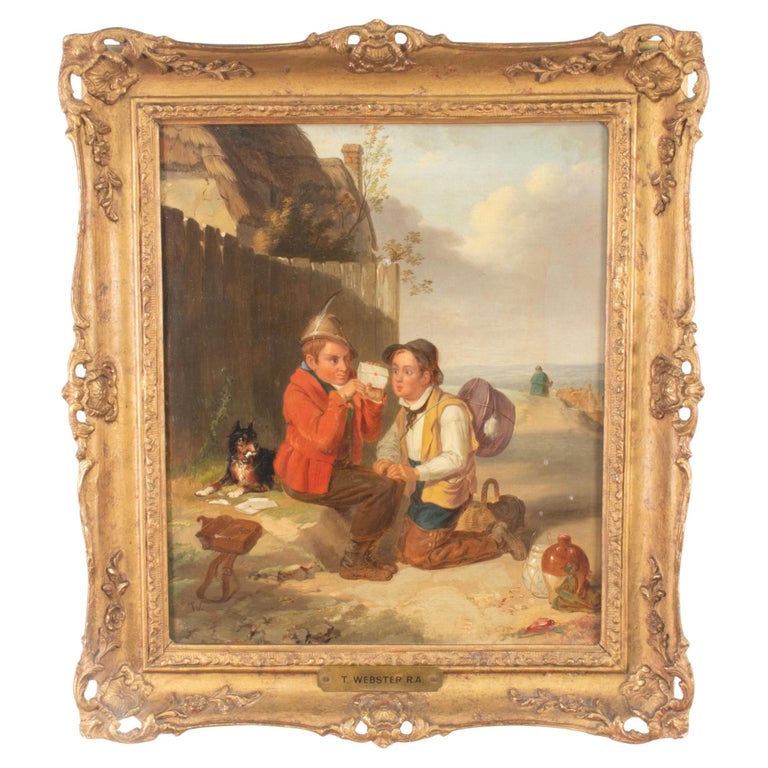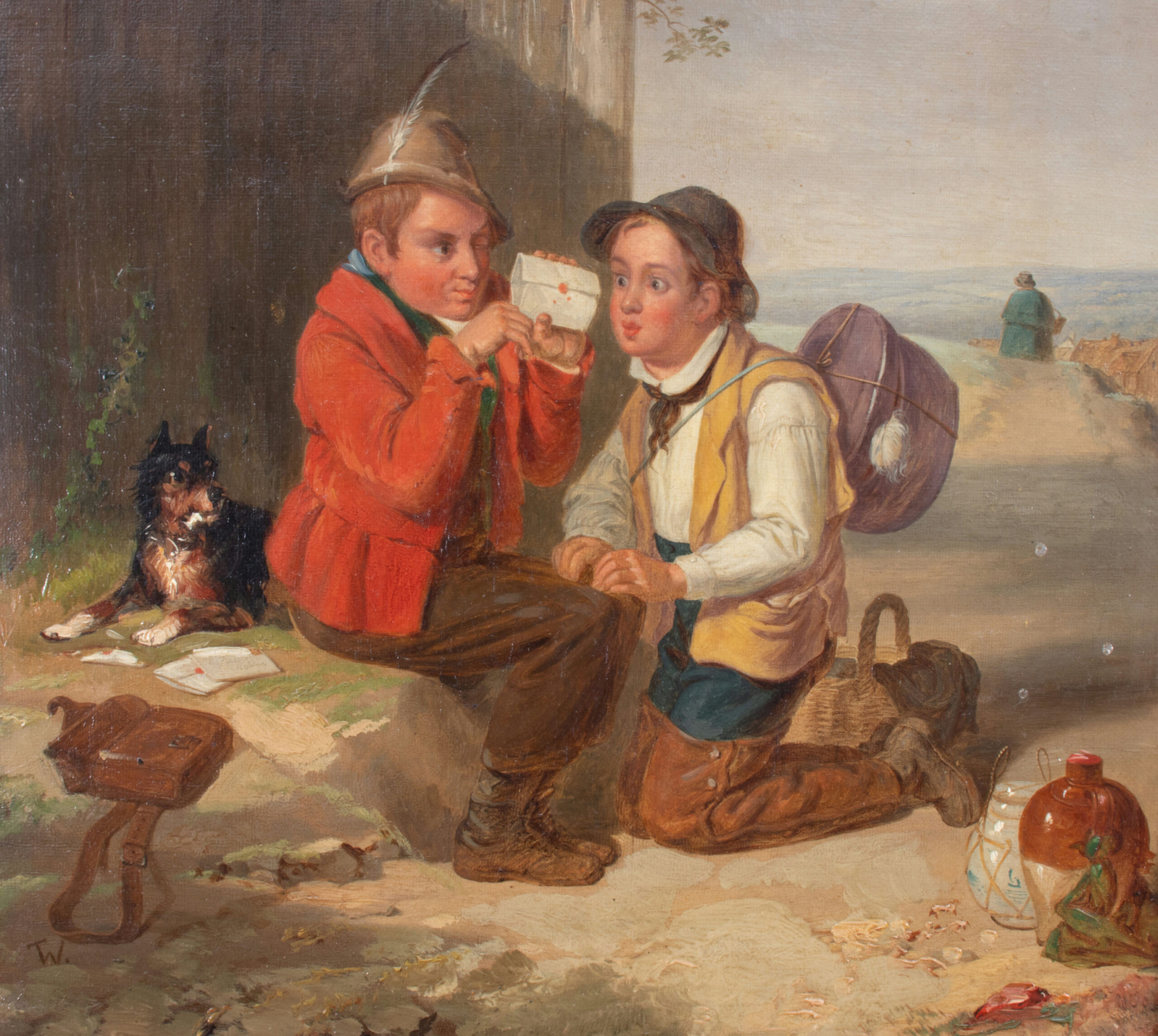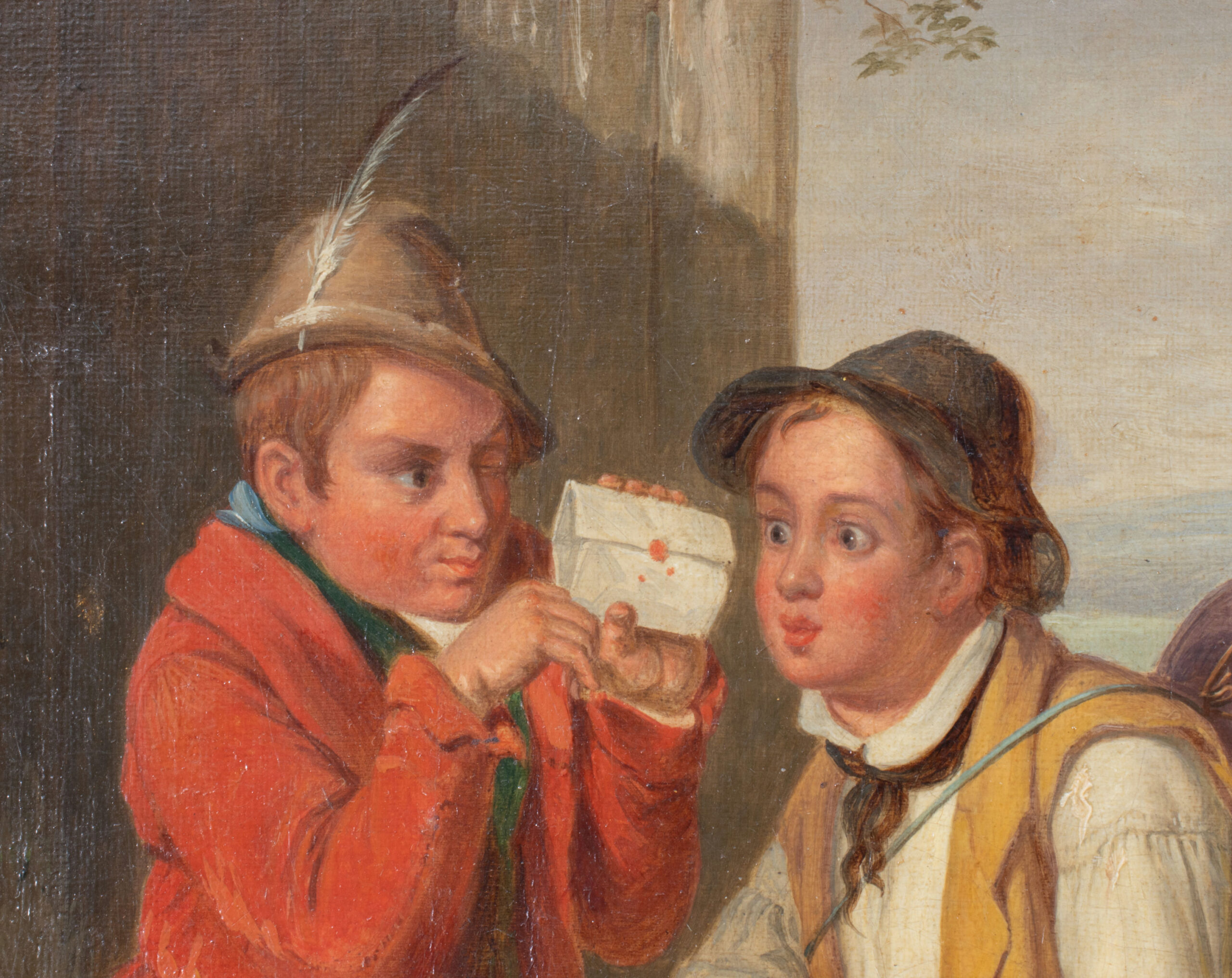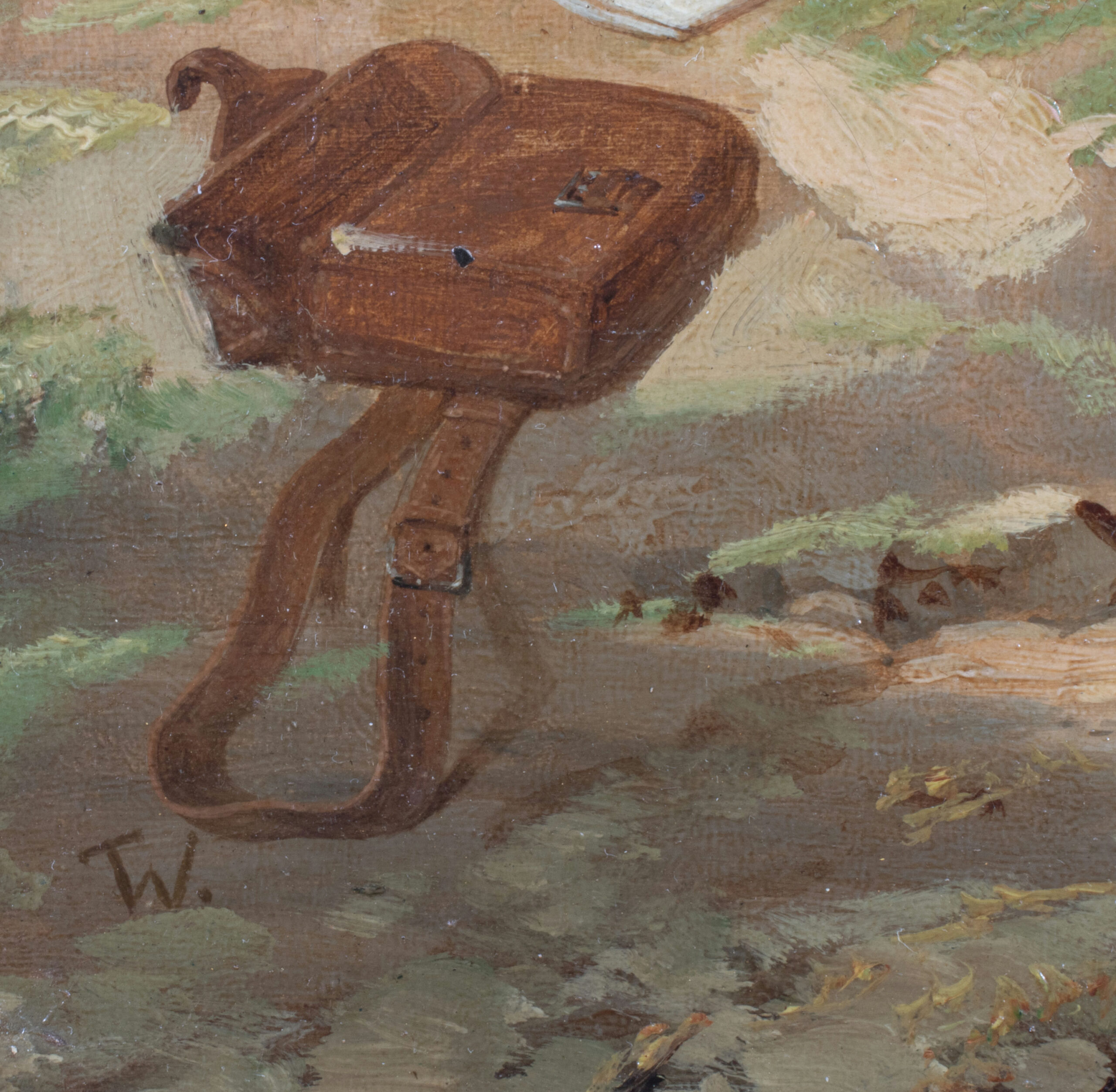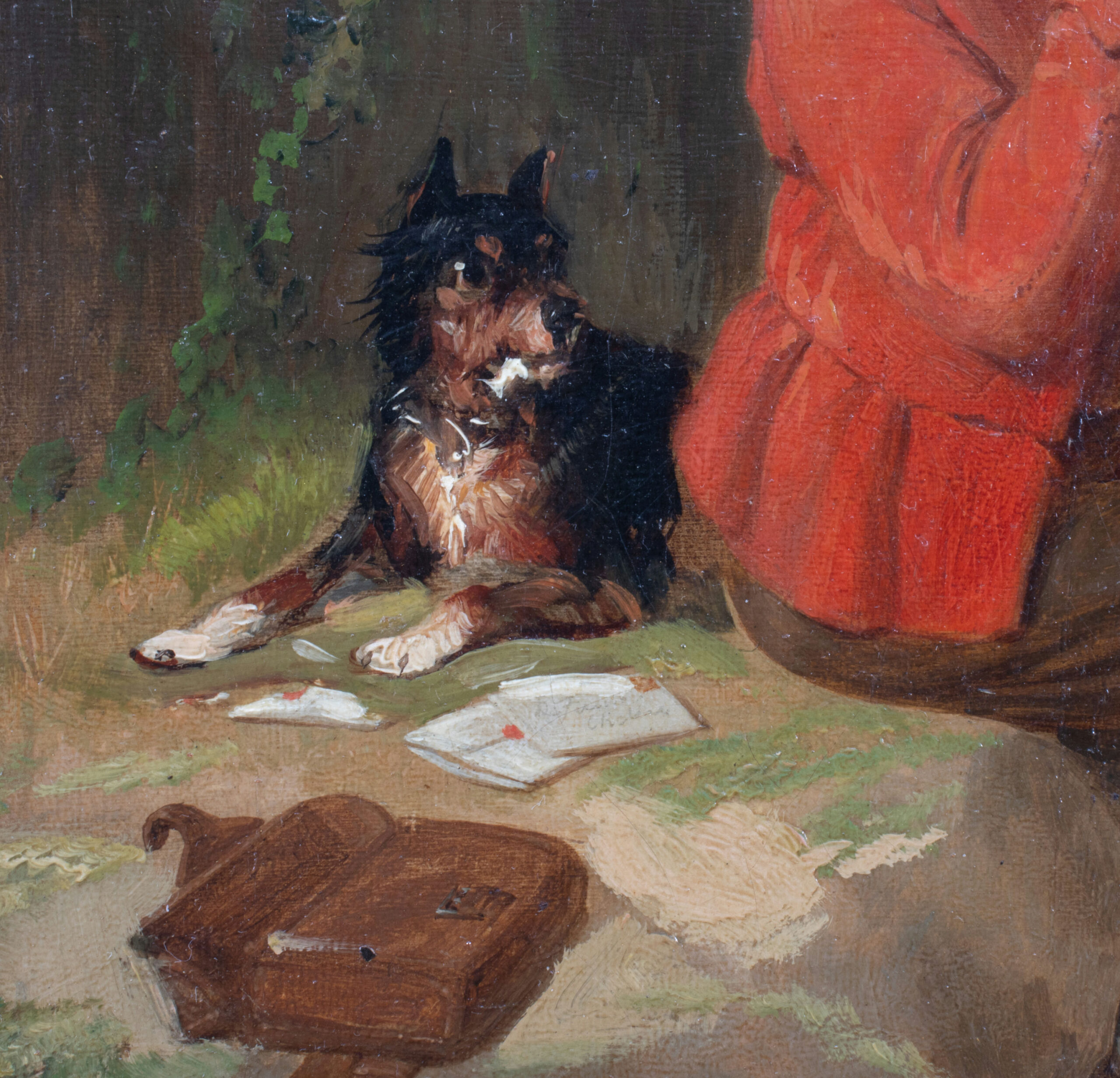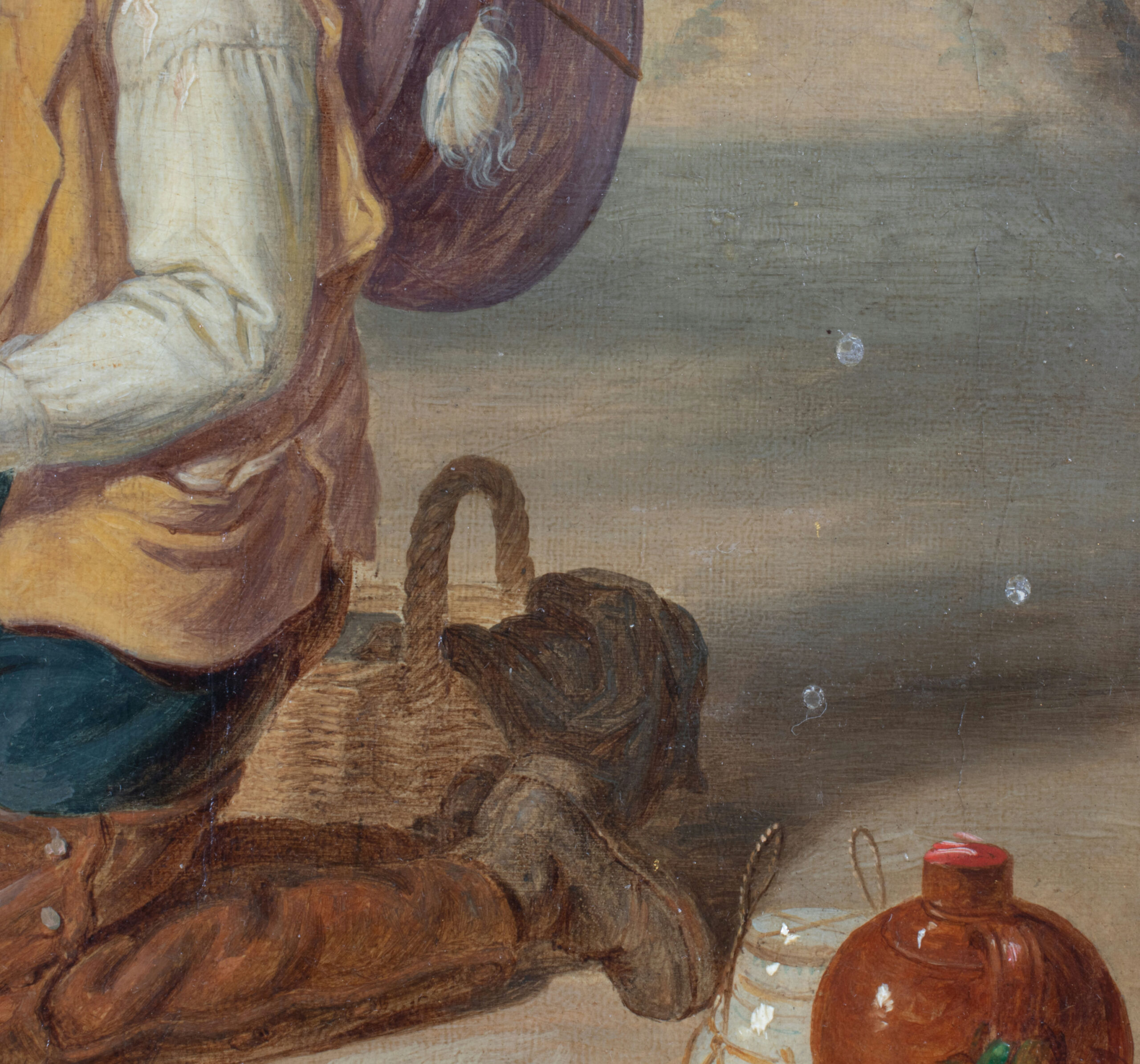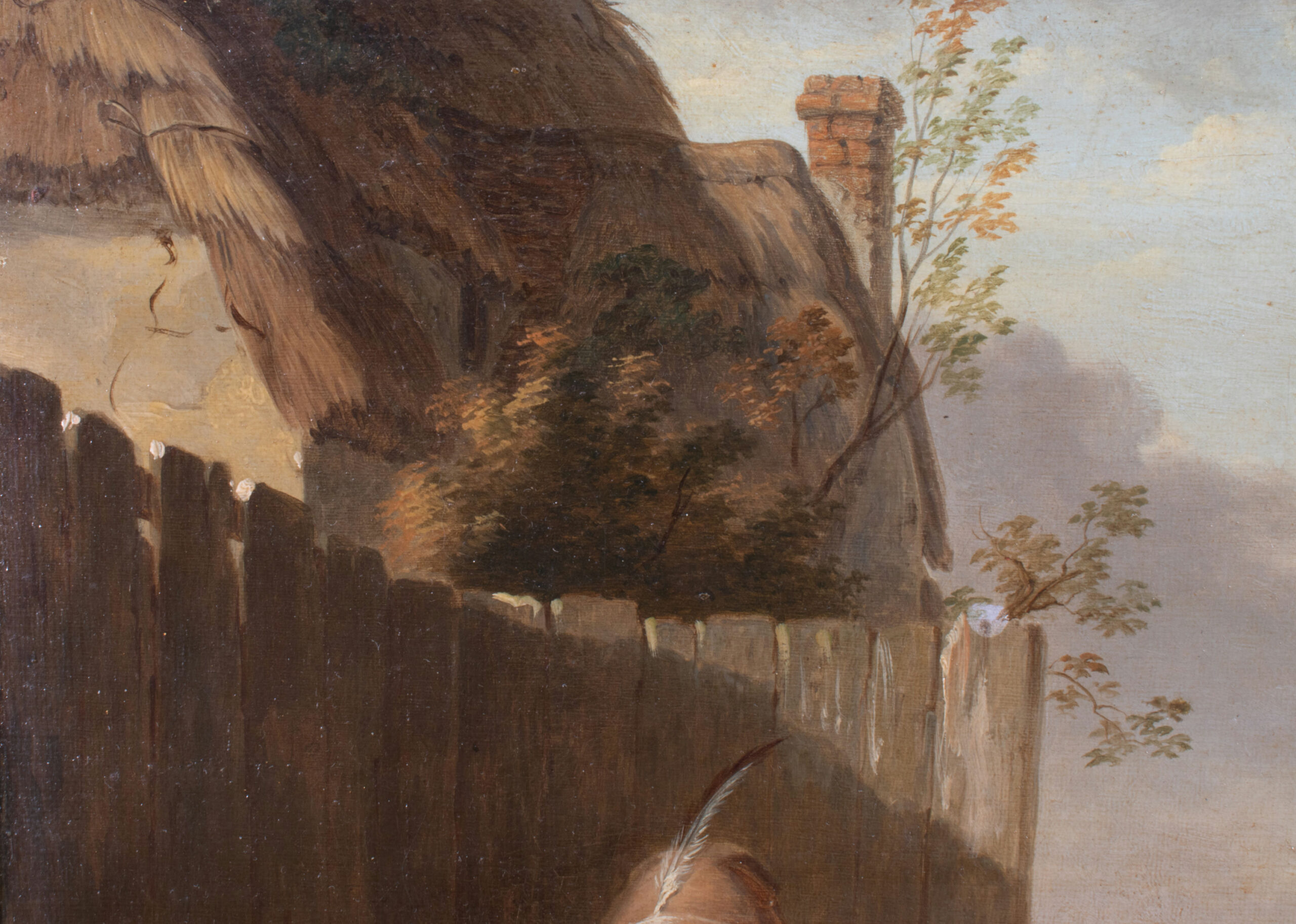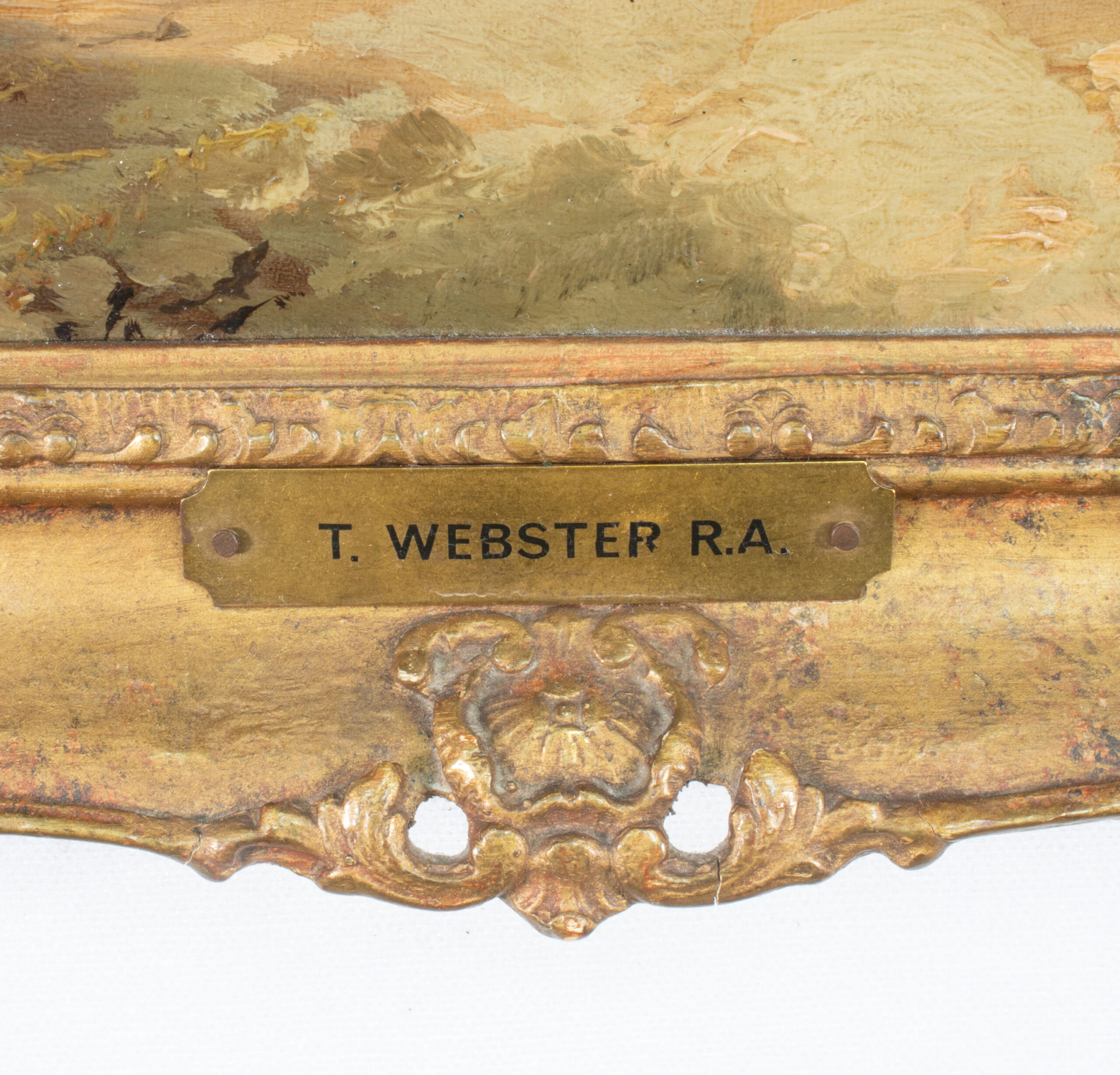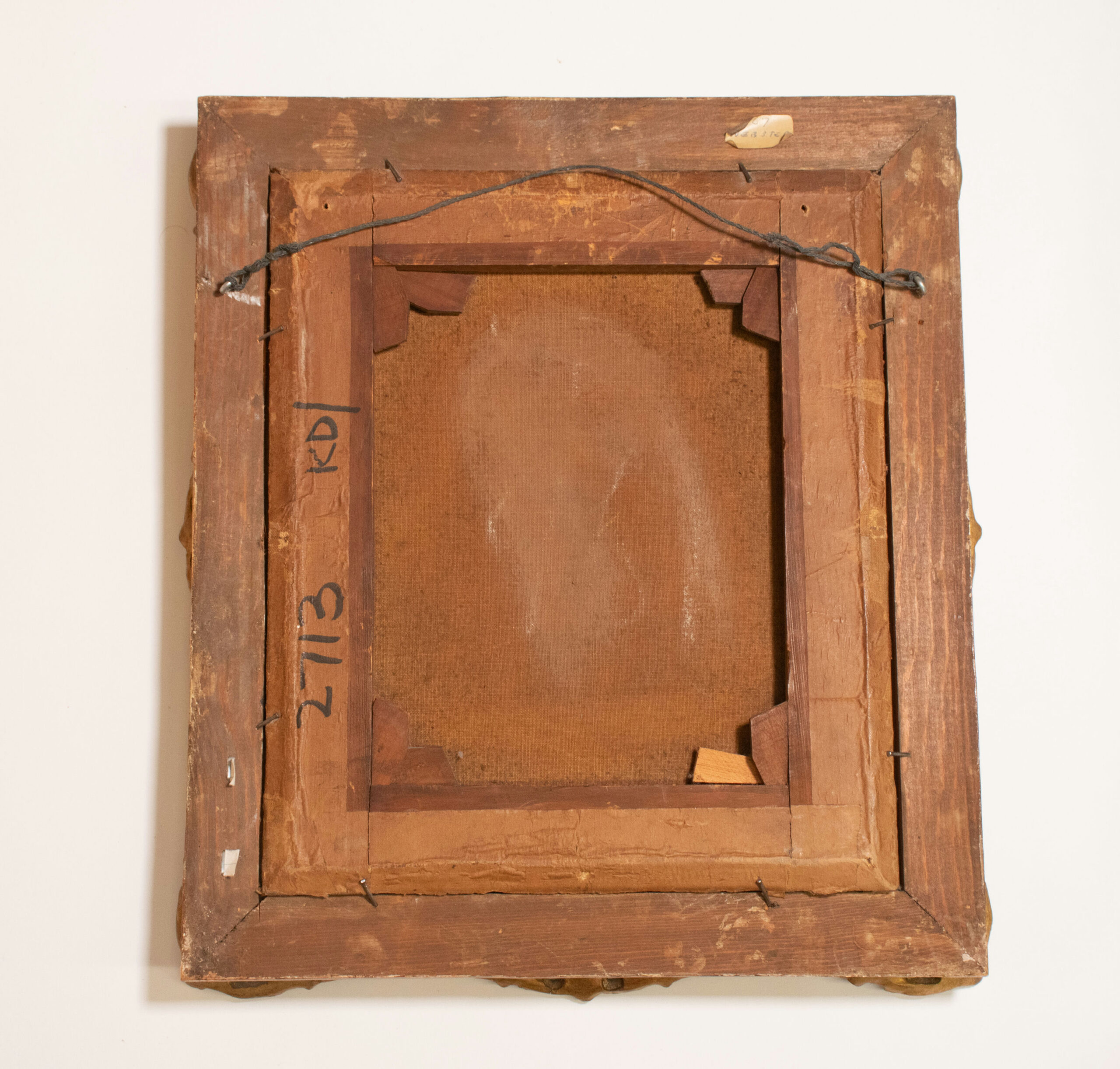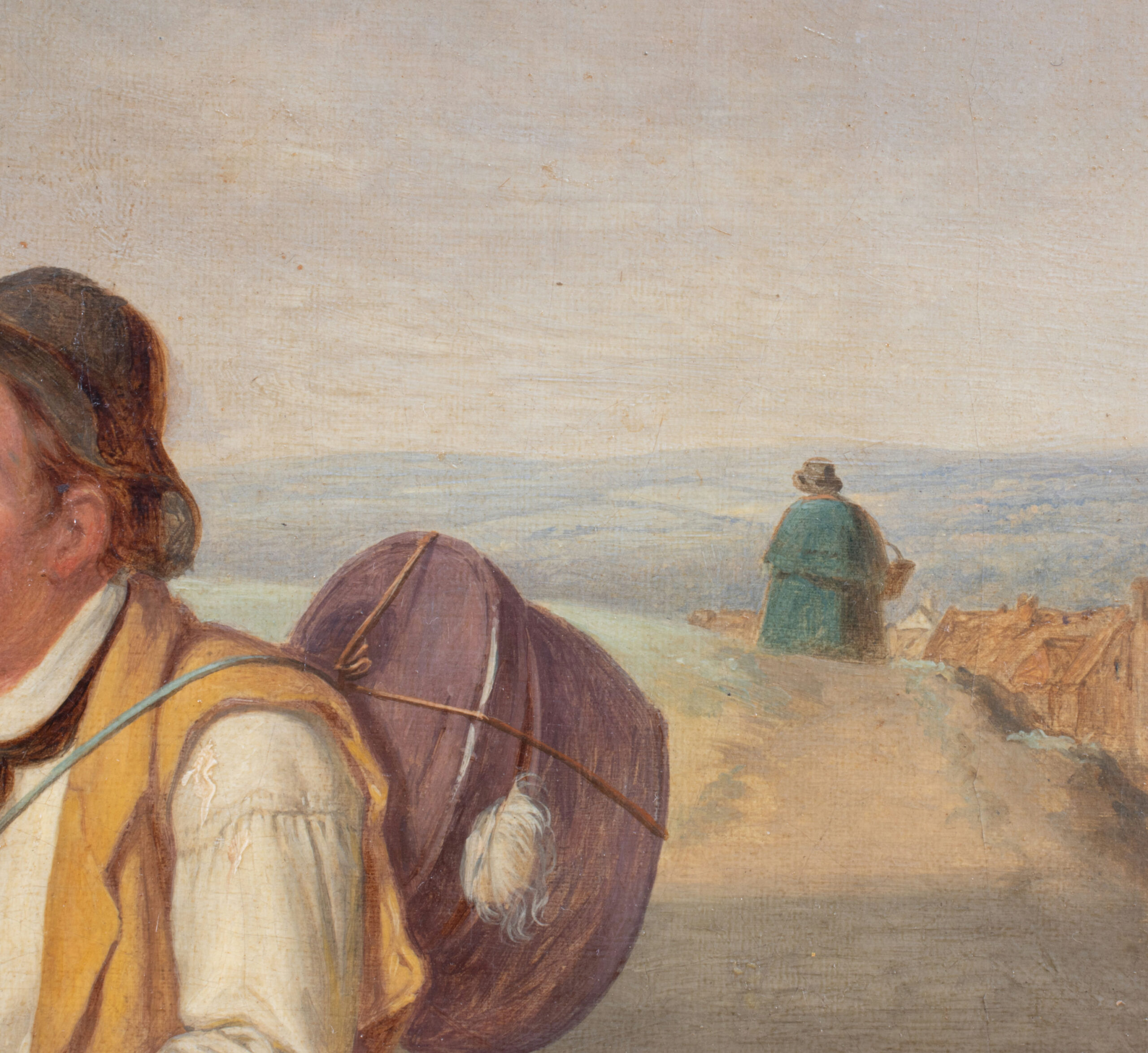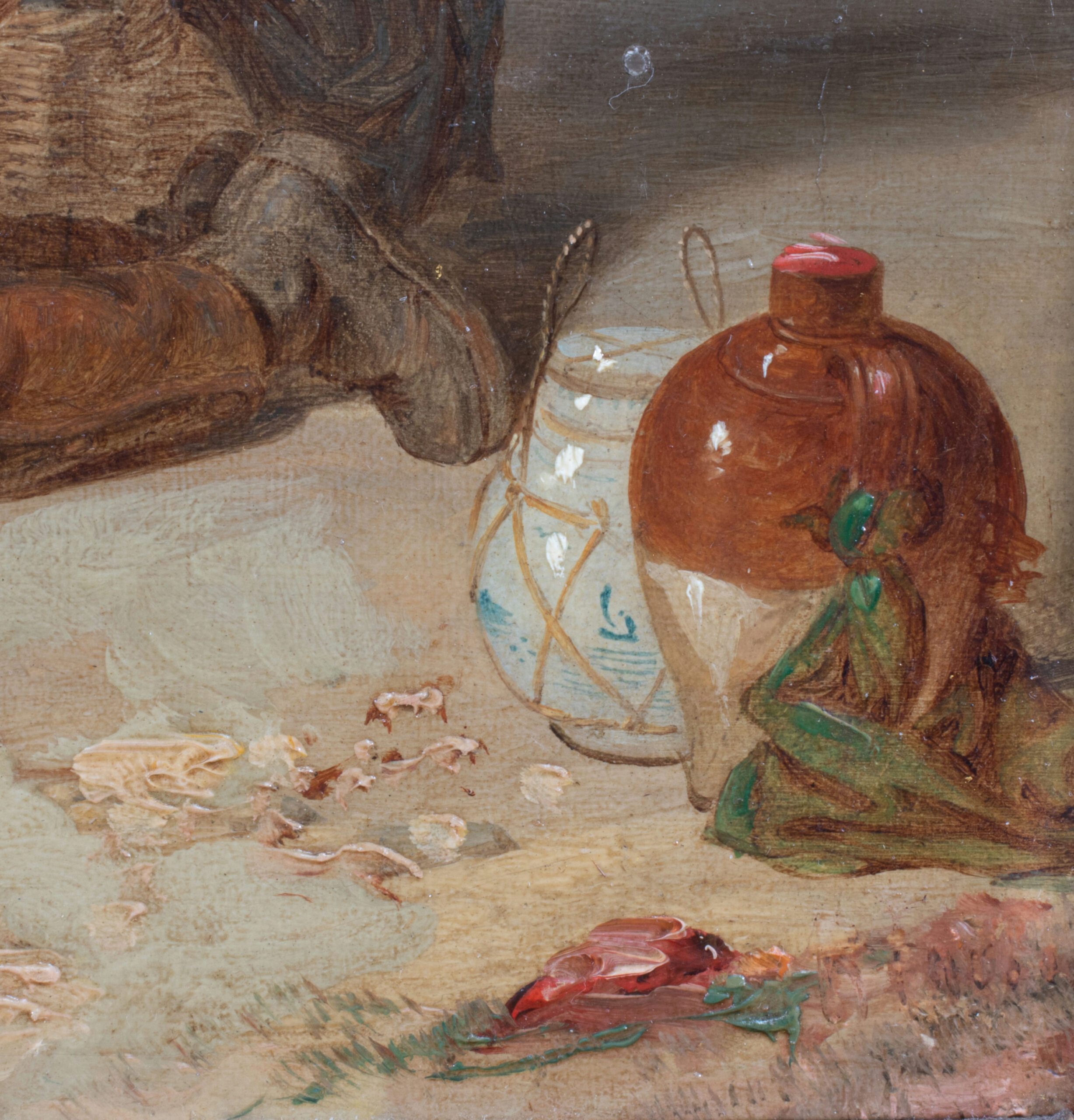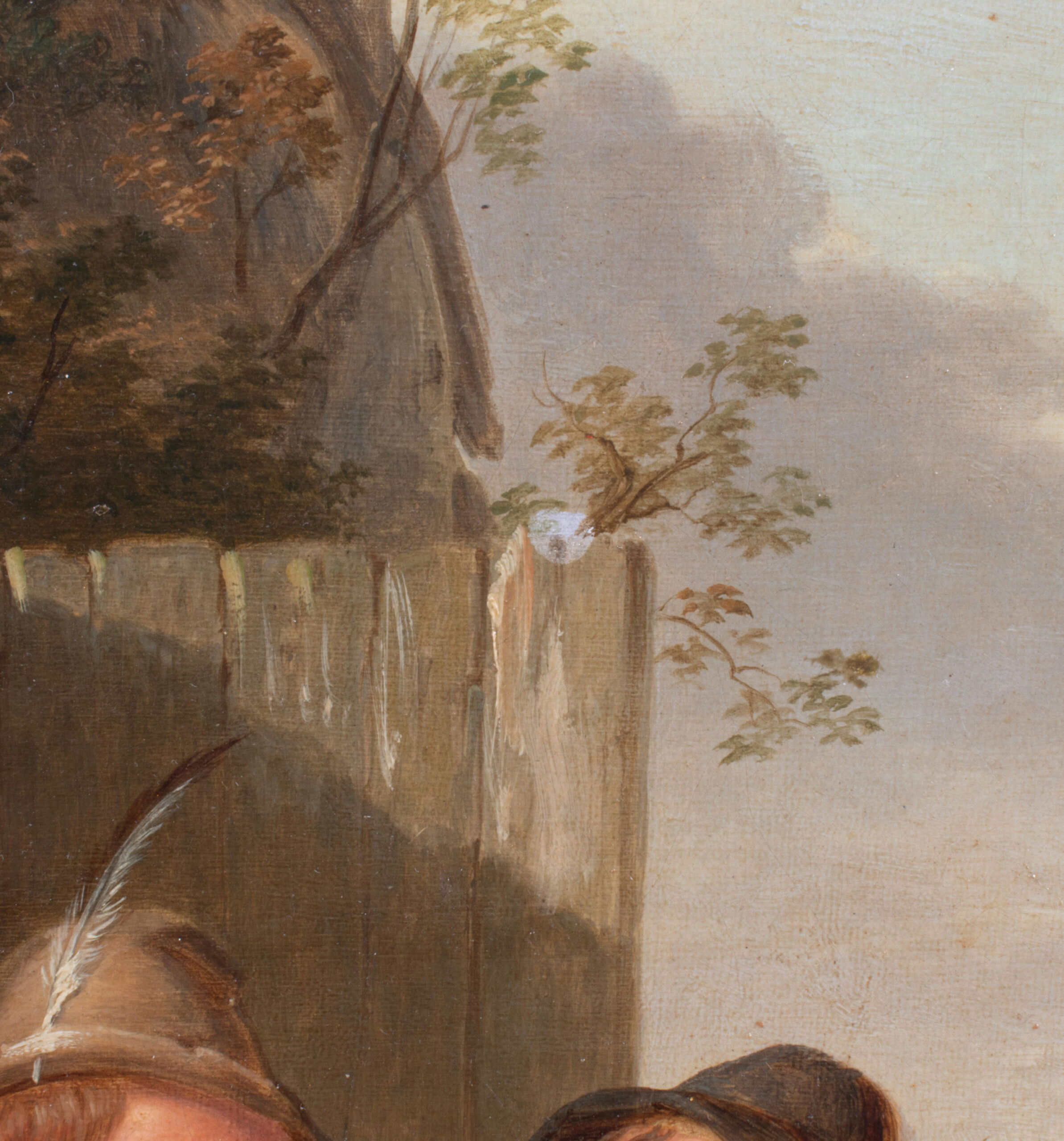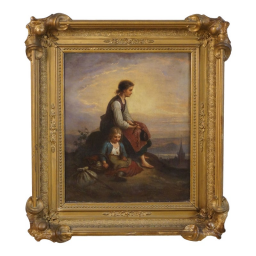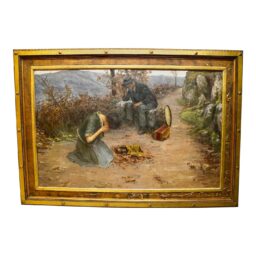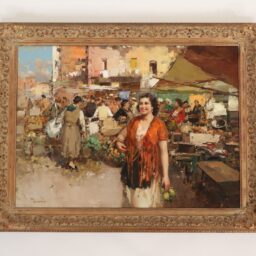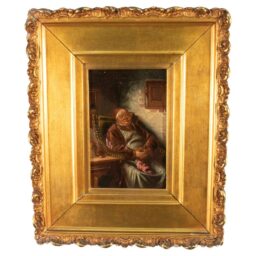Description
This whimsical 19th-century oil on canvas, attributed to Thomas Webster R.A (1800-1886), depicts two young boys spying inside of a sealed letter, careful not to break the seal. The scene is further illustrated with a trail leading to the sea, a little dog tearing up some of the remaining letters strewn from a leather pouch, and a house with thatch roofing behind a wooden fence. The painting also features the monogram “WT” in the lower left-hand corner.
Housed in an exquisitely carved period frame – a work of art in itself. This gorgeous piece resides in an ornate Louis XV late Régence style frame adorned by corner and center rocaille cartouches with floral bosses and inner running foliate ornament. The shape comes from the swept sides and concave profile especially characteristic of Louis XV frames. The Régence frame style (c.1715-1723) placed greater emphasis on the corners and centers. The full Regency style was both opulent and delicate, with the order and linearity of this period giving way to the swirling delicacy of the Rococo. Likely not original to the painting due to style and date discrepancies.
Webster was born in London, the son of a member of George III’s household. He began his studies at the Royal Academy Schools in 1821, winning a gold medal in 1825. Over the course of a successful career, he exhibited eighty-three works at the Royal Academy between 1823 and 1879, thirty-nine at the British Institution (1824–44), and eight at the Society of British Artists (1825–34). He was ultimately elected an ARA in 1840 and an RA in 1846. Webster gained great popularity in his lifetime for scenes of contemporary rural, and in particular, cottage life. These genre paintings were widely acknowledged, many of which became popular through steel engravings/reproductions. As seen here, he often painted with children as subjects, in which he depicted everyday occurrences in an ingenious and humorous way. His works are further characterized by skillful composition, detail, and keen observation. In 1857 Webster moved to the village of Cranbrook, Kent, and became the informal leader of the Cranbrook colony that thrived as a group of genre painters in Cranbrook in the latter half of the nineteenth century.
This painting is possibly a copy of another artwork by contemporary, Robert Farrier (British 1796-1879) titled ‘Pursuit of knowledge under difficulties’ that was exhibited at the British Institution in 1841, lot 111. The paintings have nearly identical subject matter and compositions. Unclear whether they crossed paths as they both had paintings in exhibitions at the same time.
This mischievous scene employs expert painting skills and a dynamic composition. This painting is a playful snapshot of quotidian life and would be a joyful addition to a home office, living room, or kitchen.
Canvas: H= 12.25 in. W=10.25 in.
With Frame: H=16.75 in. W=14.25 in. D= 2.25 in 7 lbs.

